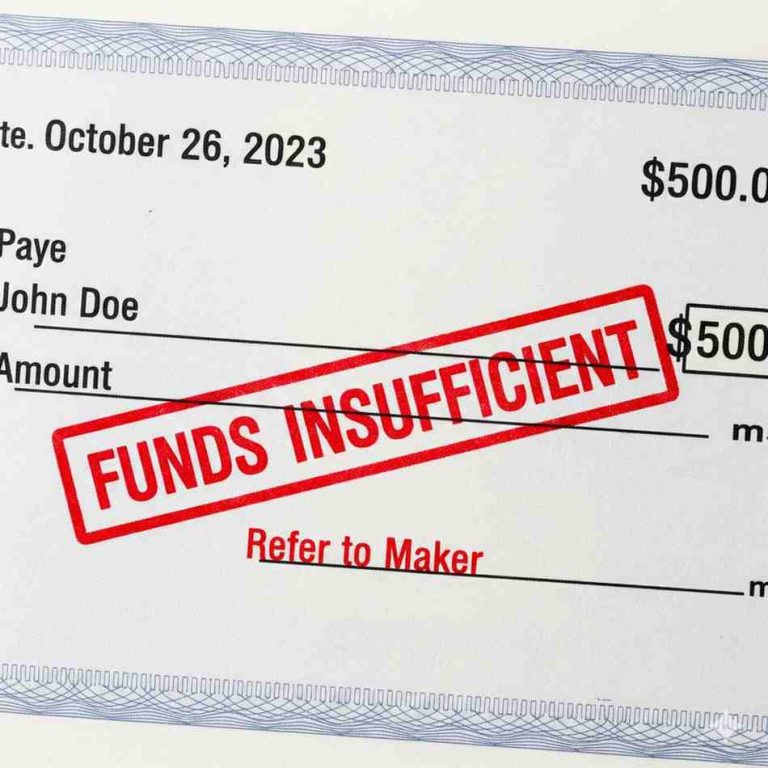A bounced cheque is more than an inconvenience; it’s a direct threat to your business’s cash flow and stability. Under India’s Negotiable Instruments Act, 1881, a cheque bounce is a criminal offense. Section 138 provides a powerful legal remedy for businesses to recover their rightful dues. This guide explains the process, potential pitfalls, for mastering Cheque Bounce Cases to manage it effectively and efficiently.
Table of Contents
- What Exactly is a Section 138 Cheque Bounce Case?
- The Step-by-Step Legal Process for a Section 138 Complaint
- From My Experience: 3 Costly Mistakes Businesses Make
- Mini Case Study: The Importance of a Flawless Demand Notice
- Choosing the Right Legal Partner for Cheque Bounce Cases
- Frequently Asked Questions (FAQs)
- Key Takeaways: Your Quick-Start Summary
What Exactly is a Section 138 Cheque Bounce Case?
Section 138 of the Negotiable Instruments Act, 1881, makes it a criminal offense for a person to issue a cheque that is later dishonoured (bounced) by the bank due to insufficient funds or if it exceeds the amount arranged to be paid from that account. 📜
This law is designed to uphold the credibility of cheques as a mode of payment and provide a swift legal remedy for the aggrieved party (the payee). For a business, this means you have a specific, time-bound legal path to reclaim your money from a defaulting client or customer.
The consequences for the issuer (the drawer) can be severe, including imprisonment for up to two years, a fine which may be up to twice the amount of the cheque, or both.
The Step-by-Step Legal Process for a Section 138 Complaint
Navigating a cheque bounce case requires strict adherence to timelines. Missing a deadline can invalidate your entire claim. Here is the process our team follows, broken down into actionable steps.
An Actionable Checklist for Your Business
- Cheque is Dishonoured (The Trigger): The process begins the moment your bank returns the cheque unpaid. You must obtain the “cheque return memo” from your bank, stating the specific reason for the dishonour. This memo is crucial evidence.
- ✅ Send a Formal Demand Notice (30-Day Window): From the date you receive the cheque return memo, you have 30 days to send a formal legal notice to the person or entity who issued the cheque (the drawer). This notice must demand payment of the cheque amount and should be sent via registered post with acknowledgement due (RPAD) to serve as proof of delivery.
- ✅ The Drawer’s 15-Day Payment Window: After receiving your notice, the drawer has 15 days to make the full payment. If they pay within this period, the matter is settled, and no further legal action is required.
- ✅ File a Criminal Complaint (Next 30-Day Window): If the drawer fails to pay within the 15-day window, you have the right to file a criminal complaint under Section 138. This complaint must be filed in the appropriate Magistrate’s court within 30 days from the expiry of the 15-day notice period.
- ✅ Court Proceedings: Once the complaint is filed, the court will issue a summons to the accused (the drawer). The legal proceedings will then commence, involving evidence, arguments, and finally, a judgment. Engaging skilled cheque bounce cases advocates in Chennai or your local jurisdiction is vital at this stage to represent your interests effectively.
From My Experience: 3 Costly Mistakes Businesses Make
In my years of practice, I’ve seen businesses jeopardize strong cases due to simple, avoidable errors. Here are three common pitfalls that mastering cheque bounce cases lawyers can help you avoid.
- Delaying the Demand Notice: The 30-day window to send the demand notice is absolute. I once consulted with a business owner who waited 40 days, hoping for an amicable settlement. Unfortunately, that delay legally barred them from filing a Section 138 case, turning a recoverable debt into a significant loss. Always act immediately.
- Accepting Partial Payment After the Notice: Sometimes, a drawer will offer a partial payment after receiving the demand notice to stall proceedings. Accepting it without a proper legal agreement can complicate your claim. The Supreme Court has clarified this in various judgments, but it remains a tricky area. It’s best to consult your lawyer before accepting any funds post-notice.
- An Incomplete or Vague Demand Notice: The demand notice is the foundation of your case. It must clearly state the cheque details, the amount, the reason for the bounce, and the demand for payment. Any ambiguity can be exploited by the defense.
Case Study: The Importance of a Flawless Demand Notice
A mid-sized manufacturing client in Chennai approached us after their cheque bounce case was challenged. The opposing counsel argued that our client’s initial demand notice—sent without legal assistance—did not explicitly state that legal action would be initiated if payment wasn’t made in 15 days.
Our Action: We had to argue on points of law that the overall intent of the notice was clear. While we eventually succeeded, the case was delayed by nearly six months and incurred extra costs.
The Lesson: Had the client engaged an expert from the start, a legally sound notice would have prevented this challenge altogether, saving them time and money. This is a prime example of why professional guidance on Section 138 lawyers in India is a sound investment.
Choosing the Right Legal Partner for Cheque Bounce Cases
When your business’s finances are on the line, you need more than just a lawyer; you need a strategic partner. When looking to hire a law firm, consider the following:
| Criteria | Why It Matters |
| Experience in Commercial Law | They understand the business context and the importance of cash flow. They can provide advice that aligns with your commercial goals, including broader debt recovery actions. |
| Proven Track Record in S.138 | Look for lawyers who specialize in this area. They know the procedural nuances and common defense tactics. |
| Clear Communication | Your legal team should provide regular updates and explain complex legal matters in simple terms. |
| Strategic Approach | The goal is recovery. A good lawyer explores all avenues, including negotiation and settlement, not just litigation. |
Frequently Asked Questions (FAQs)
If the drawer intentionally avoids receiving the registered post notice, it is generally considered “deemed service” by the courts. As long as you sent it to their correct, last-known address, your case can proceed.
Yes, but it’s more complex. The Supreme Court has held that a cheque issued for security can be prosecuted under Section 138 if it was meant to be presented upon the non-fulfillment of a legally enforceable debt or liability. This requires careful legal argument.
The entire timeline is strict: 30 days to send a notice from receiving the bank memo, 15 days for the drawer to pay, and 30 days to file the court complaint after the 15-day period expires.
Yes. If a company issues a bounced cheque, the company itself and every person in charge of and responsible for the conduct of the business at the time (like Directors or Partners) can be held liable.
Key Takeaways: Your Quick-Start Summary
- Act Fast: The timelines for Section 138 are non-negotiable. The clock starts the day you get the cheque return memo.
- The Demand Notice is Critical: This document is the bedrock of your case. Ensure it is professionally drafted and sent correctly.
- Document Everything: Keep the original cheque, the bank return memo, a copy of the demand notice, and postal receipts safe.
- Seek Expert Guidance: A bounced cheque is a legal issue with financial implications. Engaging mastering cheque bounce cases lawyers from the outset protects your interests and maximizes your chances of recovery.
Don’t let a bounced cheque disrupt your business. Take control of the situation by leveraging the power of Section 138.
Ready to Recover Your Dues?
If your business is struggling with unpaid invoices due to bounced cheques, don’t wait. Contact the experienced team of Cheque Bounce Cases Advocates in Chennai to provide a strategic and effective legal path to recover what you are owed.
About the Author

Shanmugapriya is an accomplished Advocate of the High Court of Madras with over a decade of experience in handling complex legal cases, specializing in commercial disputes and debt recovery. Her expertise spans various legal forums, including the Commercial Courts, the National Company Law Tribunal, and arbitration panels. Shanmugapriya is known for her practical, results-oriented approach and her deep understanding of the intricacies of Indian commercial law.
Disclaimer
The information provided in this blog post is for general informational purposes only and does not constitute legal advice. The legal landscape is constantly evolving, and the information may not be up-to-date or applicable to your specific situation. It is strongly recommended that you consult with a qualified legal professional for advice tailored to your individual circumstances.
Editorial Standards & References
This article was written to provide accurate, evidence-based information. It has been reviewed for legal accuracy and clarity by legal professionals.
References:
- The Negotiable Instruments Act, 1881. India Code, Government of India. Accessed September 7, 2025. [URL: https://www.indiacode.nic.in/handle/123456789/2188]
- Reserve Bank of India. FAQs on Cheque Truncation System (CTS). RBI. Accessed September 7, 2025. [URL: https://www.rbi.org.in/Scripts/FAQView.aspx?Id=140]
- LiveLaw.in. (2024). Recent Supreme Court Judgments on Section 138 NI Act. This is a placeholder for a specific, recent judgment to be sourced from a high-authority legal news portal. [URL: example.com]

